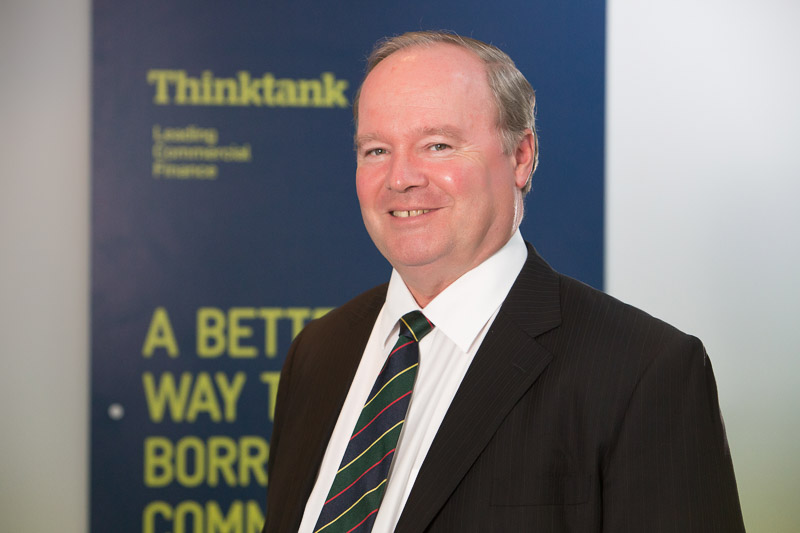

By
SMSF-lending-based property assets have increased from under 5% to over 20% of total assets from 2012 to the present day. Thinktank’s Per Anderson and La Trobe Financial’s Cory Bannister discuss whether this growth can be sustained, the drivers, and the inherent risks brokers should be aware of
THINKTANK
Growth in LRBAs (limited recourse borrowing arrangements) has been strong since 2012, part of the reason being that they are a fairly recent innovation, having only been introduced in 2010.
However, this growth has been levelling off, and based on the latest statistics released by the ATO, the SMSF regulator, the number of LRBAs has in fact reduced slightly between June 2018 and June 2019 and now represents about 6% of total SMSF assets.
This is approximately double the 3% they represented back in 2014 when Thinktank started making LRBAs available.
At the same time, SMSFs have only grown about 15% from 521,417 in June 2014 to 599,678 in June 2019.
In looking at these numbers it is also important to consider how SMSFs are made up with respect to residential and non-residential property. Over the past year, the split has remained fairly steady at 35% residential and 65% non-residential, but this is a shift from five years ago when it was 25% residential and 75% non-residential.
That still represents a heavy preference for commercial property, which may have contributed to the growth over that five-year period.
Generally, Australian investors view real estate as a positive long-term investment. There is also the added bonus of ‘ business real property’ – which generally means land and buildings used wholly and exclusively in a business – where SME operators can own the business premises that the fund invests in.
Long-term growth in the sector is driven by these motivating factors, and it is likely to continue at a steady pace, which we think would reflect the attractiveness of investing in real property as well as the particular benefits enjoyed by commercial owner-occupiers.
Diversify and educate
SMSF lending requires a sound level of knowledge of the need for compliance with the legislation governing SMSFs – that is, the Superannuation Industry (Supervision) Act 1993 (SIS Act) and the Superannuation Industry (Supervision) Regulations 1994, together with a number of ATO rulings and interpretive decisions to be found on the ATO Legal Database.
There are lots of industry body courses available that can provide an introduction to these, and lender workshops are also a good source of both product and regulatory information.
For ongoing professional development, there are numerous online sources of information from SMSF industry groups, and a wide range of periodicals that brokers can access directly, which Thinktank can also help them access.

Pros and cons
The client has to be willing to take the responsibility that goes with having an SMSF and becoming a trustee or director of a corporate trustee. There are strict qualifications and requirements that have to be met, and there are certain costs involved in setting up an SMSF. Accounts must be prepared annually and an audit conducted, as well as time spent on reviewing and implementing the investment strategy.
This means the asset base of the SMSF has to be sufficient to justify both the cost and the time. The guide for this varies anywhere from the minimum net tangible asset base of $250,000 that Thinktank requires, to as high as $500,000 recently suggested by the Productivity Commission.
The major limitation imposed on members once the funds are in their SMSFs is that these cannot be withdrawn until certain conditions of release are met, which are primarily around age and retirement.
With respect to assets that are subject to LRBAs, the major drawback is that you cannot borrow further funds against them after the initial LRBA is established, and they cannot be used as collateral for another loan when the value goes up, as you can with traditional non-SMSF mortgages.
But SMSFs are also an uncommonly tax-effective vehicle for creating and retaining mediumto longer-term wealth.
Given the current commercial property yields and loan terms available from Thinktank, commercial property that is acquired to accommodate a member’s business operations could see loan repayments at similar levels to, or in some cases lower than, market rents.
There may be no or minimal change in cash flow; however, the member’s business now trades from their own property, thus removing rent relocation risk at the expiry of the lease and preserving goodwill and creating wealth.
The refinancing of LRBAs is permissible, plus costs and loan terms can be reset to optimise cash flow, which should mitigate concerns over restrictions to additional borrowing.
This can overcome the impost of shorter loan terms that can necessitate higher repayments and in turn lead to potential cash flow issues separate to the creation of ‘dead equity’ that cannot be accessed other than through the sale of the asset.
Overall, there is a great deal of life left in SMSF LRBAs in their own right, and we are still seeing considerable demand for broker assistance in arranging and structuring the associated funding.
LA TROBE FINANCIAL

SMSF exposure to property is – if anything – below what could be expected and experienced in most wealth accumulation vehicles.
SMSF exposure specifically to residential property is smaller again at just $34.5bn (4.6% of sector AUM), and exposure to commercial property is just $64bn (8.6% of sector AUM).
While these investment numbers are not material in a percentage accounting sense, the investments in both residential and commercial property being made by SMSF trustees on behalf of their beneficiaries total 13.20% of total SMSF corpus or AUM.
The degree by which the SMSF sector continues to be embraced by ordinary Australians is a staggering endorsement of its ongoing value.
Driving growth
A fundamental principle driving the growth in SMSFs is the basic desire of Australians to control their own destiny and remain independent.
This drive to ‘self-manage’ their own retirement superannuation funding and to choose how to manage it, without complex or exorbitant manager fees, is complemented by the property being an asset class that most Australians understand and are comfortable with.
These two factors combine to drive the growth and accumulation of wealth of over 599,678 SMSFs – an asset class that has low volatility and appears to be a much safer outcome than allowing superannuates to invest in asset classes they aren’t as familiar with or experienced in assessing with respect to their associated risks.
These 599,678 SMSFs each have over 1.1 million members who have taken control of their superannuation. With this in mind, we expect to see continued but slower growth of the SMSF sector, because while many Australians have a penchant for DIY generally, there are also signs of continued younger entrant growth, particularly in the 35–49 age bracket.
The majority of SMSFs are established by self-employed business people, who are astute and understand investment risks, after having run their own businesses. And because there are some 2.4 million self-employed persons in Australia, this indicates plenty of growth opportunities for SMSFs.
Positive mechanism
La Trobe Financial genuinely believes that LRBAs are a positive mechanism enabling consumers to accumulate wealth for their retirement, and expects that the number of SMSF participants will continue to grow and pay dividends.
Brokers should consider offering SMSF loan products as part of their overall diversification strategies, as they offer such significant growth potential.
Unless brokers cater to their clients’ full finance needs, there is an increasing risk that they will leave you for someone who can, as often consumers are looking for a one-stop shop.
La Trobe Financial recommends that brokers looking to get into this space should undertake a relevant training program that covers the basics of SMSF lending, such as, or similar to, the MFAA’s SMSF Lending Program.
A broker’s aggregator may also offer training and education, and lastly, it would be a good idea to partner with a lender that offers direct access to credit staff who are willing to educate and assist brokers throughout the process.
Benefits and risks
The most fundamental benefit of SMSF loans is that they allow a borrower to invest directly in residential or commercial property using funds they have accumulated in their super.
There may be some tax advantages, as interest and borrowing expenses are generally tax deductible, which can reduce the tax payable within the fund; however, La Trobe Financial strongly recommends financial advice is obtained to ascertain this prior to committing.
And for the many SME business owners, there is the attractive proposition of being able to acquire or transfer their business premises into their SMSFs to take advantage of potential concessional tax benefits. Again, La Trobe Financial highly recommends finance advice is sought prior to committing.
The primary risk with SMSF lending is being unable to meet the loan obligations – a risk which is consistent with any other loan product a client chooses.
